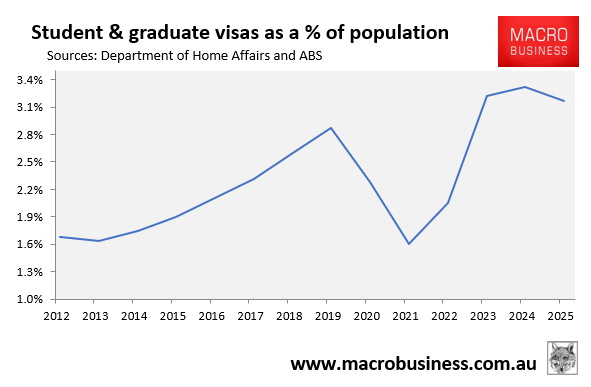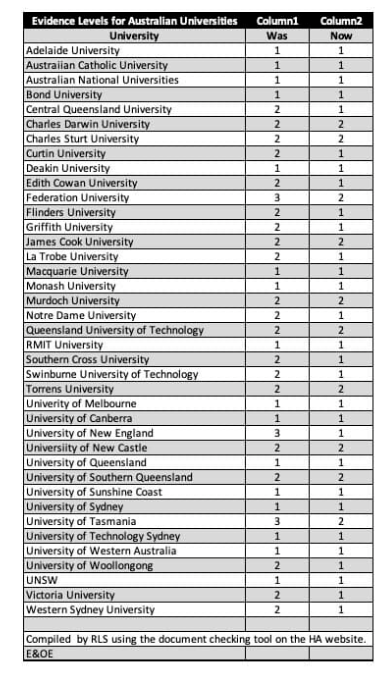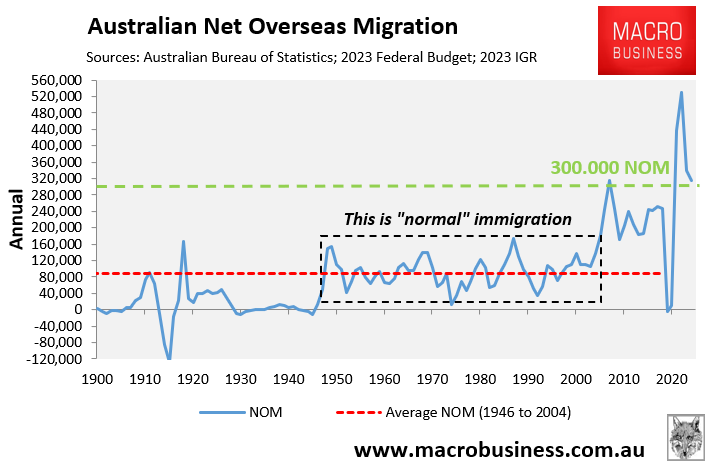The Albanese government claims it wants to reduce immigration to Australia. However, its actions on the international student front say otherwise.
Australia already has the highest share of international students and graduates in the world, accounting for 3.2% of the nation’s population as of Q3 2025, up from the pre-pandemic peak of 2.9%.

However, the above chart doesn’t capture the many former international students sitting on bridging visas.

Earlier this year, the Albanese government raised its planning level for international students by 25,000 for 2026 to 295,000.
However, this is a loose cap only, with new Ministerial Direction (MD) 115 allowing institutions to breach their caps by 15% before the Department of Home Affairs will deprioritise visa processing for new applicants linked to that institution.

For example, if a university’s allocation is 10,000 places, they can recruit up to 11,500 students without penalty. If they go beyond 11,500, visa applications for that university’s students will be slowed down.
Thus, the 115% cap under MD 115 is a compliance lever only. It doesn’t outright ban universities from enrolling more students. In a similar vein, the 295,000 planning level for 2026 is a “soft cap” only, given that providers can go beyond it without penalty.
MD 115 has also loosened other requirements, making it easier for institutions to enroll international students.
Students from South Asia have recently received lower risk weightings. This means applicants from countries like India, Nepal, Bangladesh, and Sri Lanka are now considered lower risk, which results in faster processing and fewer evidentiary burdens (e.g., less financial documentation or fewer English language test results) when applying for student visas.
In turn, lower risk weightings for South Asian students mean stronger recruitment opportunities at Australian universities.
Finally, under MD 115, around a dozen Australian universities have recently been assigned lower risk weightings for international student recruitment.
As a result, students applying to these universities face faster, easier visa approvals with fewer evidentiary requirements (e.g., less financial documentation, fewer English language test results, etc).

University risk-weightings
Clearly, MD 115 is designed to accelerate international student recruitment in Australia and will work to increase overall student numbers and net overseas migration.
No wonder, then, that former senior immigration department bureaucrat Abul Rizvi predicted that Australia’s net overseas migration will average an absurd 300,000 annually going forward, 15% higher than the Australian Treasury’s forecast.

The Albanese government has raised the speed limit on international students and immigration to Australia.

